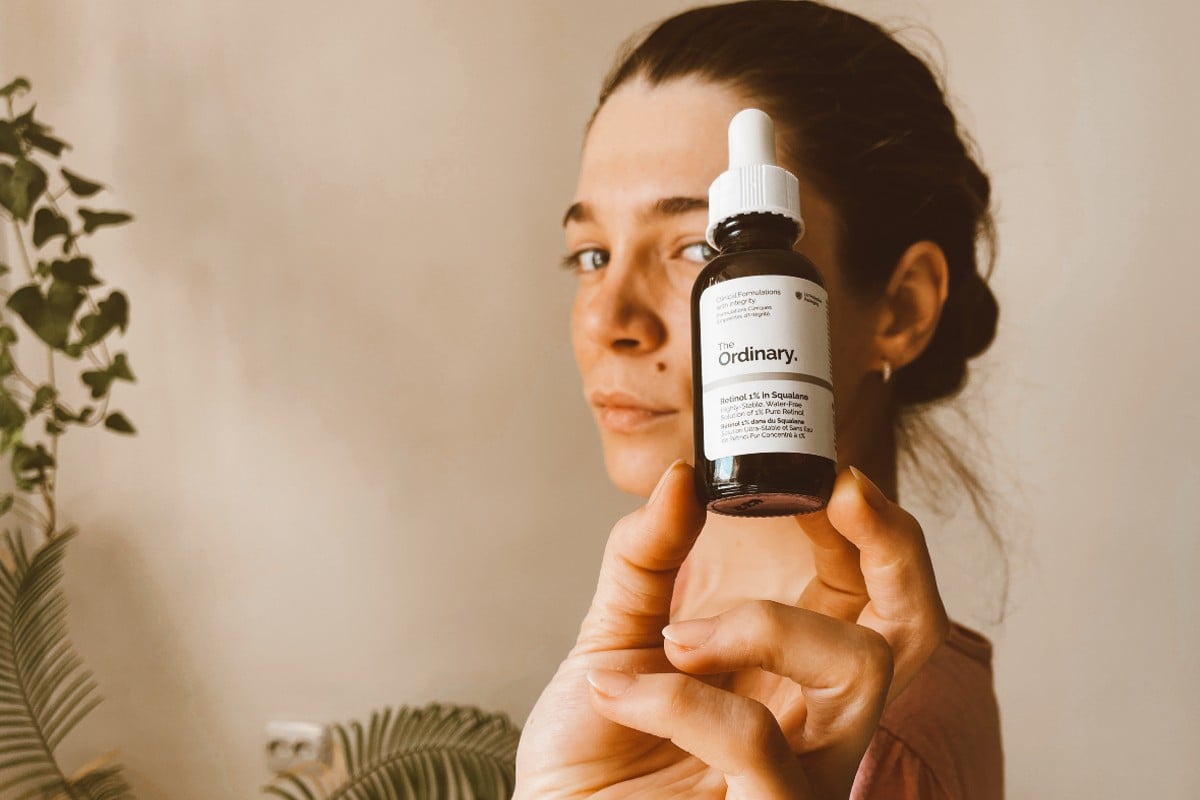Table of Contents
Are you tired of the infestation of bed bugs in your home? If you’re looking for an effective and natural way to combat these tiny pests, then making your own homemade bed bug spray is a great solution.
I’m going to show you how to make homemade bed bug spray, so you can get rid of your bed bug infestation easily, without having to spend a fortune.

What Do Bed Bugs Look Like?
Bed bugs are small, oval-shaped insects that are a reddish-brown color. They are typically the size of an apple seed, measuring about 4-5 millimeters in length.
Bed bugs have six legs and are wingless, so they can’t fly. When they have not fed, they appear flat, but after feeding on blood, their bodies become swollen and more elongated.
Here’s a table summarizing their main features:
| Feature | Description |
|---|---|
| Shape | Oval |
| Size | 4-5 mm |
| Color | Reddish-brown |
| Legs | Six |
| Wings | None (wingless) |
| Appearance after feeding | Swollen, elongated |
Identifying an infestation of bed bugs is essential for taking effective action to get rid of them. Bed bugs are often found in areas like mattresses, bed frames, headboards, and other bedroom furniture.
They can also be found in the seams and folds of your bedding. Additionally, bed bugs tend to leave small black or brown fecal spots on your sheets and mattress, which can be another sign of infestation.
Bed bug bites can also help you identify their presence. These bites often appear as small, red, itchy bumps on your skin.
Bed bug bites can be found in clusters or rows on your body, typically on exposed skin areas like your arms, legs, neck, or face.
Preventative Measures To Prevent Bed Bug Infestations
Regularly inspect your mattress and bed for any signs of bed bugs. Look for tiny bugs, their exoskeletons, or small dark spots, which are their feces.
If you find anything suspicious, act quickly to eliminate the problem.
Maintain a clean and clutter-free living space. Make it a habit to vacuum your rooms frequently, paying particular attention to the areas around your bed and other furniture.
Vacuuming helps to remove dirt and catch any potential bed bugs or their eggs.
Reducing clutter is essential, as bed bugs love to hide in piles of clothes or other objects. Keep your rooms organized and avoid accumulating unnecessary items.
This will minimize hiding spots for bed bugs and make it easier to spot any potential infestations.
When traveling, be cautious while staying in hotels, dormitories, or hospitals. These buildings have a higher potential for bed bug infestations due to the constant change of residents.
Keep your luggage elevated and away from walls, as bed bugs can hitchhike on your belongings and follow you home.
Finally, be vigilant when returning from your travels. Inspect and clean your luggage thoroughly before bringing it inside your home.
If you suspect you might have encountered bed bugs during your trip, consider laundering your clothing on high heat, as this can help kill any hitchhikers.

How To Make Homemade Bed Bug Spray
To create the best homemade bed bug spray, you can use natural ingredients and a few simple steps.
First, gather the necessary items: a spray bottle, white vinegar or rubbing alcohol, water, and essential oils such as lavender, tea tree, peppermint, or lemongrass.
These ingredients have natural pest-repelling properties that can help deter bed bugs, acting as a bed bug repellent.
Start by filling a spray bottle halfway with white vinegar or rubbing alcohol.
Both of these substances have strong acetic acid content that can disrupt the bed bugs’ nervous system, thus killing them.
However, vinegar is more effective as a natural bed bug spray. If you choose to use rubbing alcohol, be aware that it is flammable, so use caution when applying the spray.
Next, add water to the spray bottle to dilute the vinegar or alcohol, filling the bottle almost to the top.
Then, add a few drops of your chosen essential oils. Lavender oil, tea tree oil, peppermint oil, and lemongrass oils are all known for their insect-repelling properties.
You can use these essential oils alone or combine them to create a more potent mixture.
Screw the top onto the spray bottle and shake it well to mix the ingredients. Now, your homemade bed bug spray is ready to use.
Make sure to apply it liberally to the affected areas, such as mattresses, bedding, and furniture.
While this natural bed bug spray can kill the insects on contact, it may need to be reapplied to get rid of their eggs.
For an alternative homemade bed bug spray, you can also use diatomaceous earth or baking soda.
These powders can be sprinkled around your bed, furniture, and other hiding spots to dehydrate and kill the bugs.
When using diatomaceous earth, make sure to choose food-grade, as the pool-grade version can be harmful to humans and pets.
Other Home Remedies To Get Rid Of Bed Bugs
There are several other home remedies to help you deal with bed bug infestations. Here are a few methods you can try:
- Vacuuming: Start by vacuuming the entire house, including furniture, mattresses, box springs, upholstery, and even cracks in the walls. This will help remove bed bugs and their eggs, making it easier to manage the infestation.
- Heat treatment: Bed bugs cannot survive extreme hot or cold temperatures. Use a high heat setting on your dryer for clothing and bedding, and consider using a steam cleaner for your mattresses, box springs, and other furniture. For small items like luggage, you can place them in a plastic bag and put them in the freezer.
- Natural sprays: Mix equal parts of water, witch hazel, and a carrier oil (such as neem oil) to create a homemade bug spray. You can also add essential oils like thyme, citronella, or lavender for added effectiveness. Spray this solution on affected areas, but be cautious of using it on delicate materials.
- Vinegar solution: Mix water and white vinegar (about 50/50) to create a solution that can kill bed bugs. Spray it on infested areas, but keep in mind that the odor may be strong.
- Isopropyl alcohol: This can be an effective bed bug treatment; however, use caution as it is flammable and may damage certain materials. Spray a diluted solution (around 70% alcohol) on your infested furniture, mattresses, and cracks.
- Talcum powder: Sprinkle talcum powder around your bed, in cracks, and on furniture to create an inhospitable environment for bed bugs.
- Dryer sheets: Placing dryer sheets in infested areas, like your luggage or bedding, may repel bed bugs due to the odor.

Which Ingredients Should You Avoid In An Homemade Bed Bug Spray?
When making your own homemade bed bug spray, there are certain ingredients you should avoid in order to keep people and pets safe.
Never use any aerosol sprays as they can cause serious health issues from the fumes and can be flammable.
Avoid using ammonia-based cleaners – although effective for killing bed bugs on contact, they can leave behind toxic residues that are dangerous if inhaled or ingested.
Essential oils such as eucalyptus oil and tea tree oil are popular ingredients for DIY bed bug sprays but these need to be used with caution and not sprayed directly onto skin or sensitive fabrics as it could potentially irritate eyes or skin.
Lastly, when using natural insecticides such as diatomaceous earth (DE) make sure to wear a protective mask and gloves while applying the powder so you don’t inhale it which could also cause respiratory issues if done incorrectly.
![How To Make Homemade Bed Bug Spray [That Works!] How To Make Homemade Bed Bug Spray [That Works!]](https://www.gemmaetc.com/wp-content/uploads/2023/11/make-a-DIY-bed-bug-spray-at-home.jpg)
When Should You Consider A Professional Pest Control Company For Bed Bugs?
There are a few factors to consider when making this decision, when dealing with your bed bug problem.
First, assess the severity of the infestation. You may notice bed bugs in your used furniture, small crevices, or other hiding spots.
If the problem is limited, and you can easily pinpoint their location, using a toxin-free homemade spray and proper cleaning techniques might suffice to keep bed bugs at bay.
However, if the infestation has advanced, and you’re finding bed bugs in multiple areas of your home, it’s likely time to consult a pest control expert.
Professional pest control companies have access to advanced tools and treatments to eliminate bed bugs, rather than relying on repellents.
They can devise a customized plan to address your specific infestation and ensure the problem is thoroughly resolved.
These professionals have experience in dealing with more advanced infestations that might be difficult for a DIY approach to handle.
Some people may have respiratory issues or allergies that make using synthetic products risky.
In these cases, a professional pest control company can provide safe alternatives and help you manage the infestation without putting your health at risk.
A professional pest control company will also conduct follow-up visits and inspections, ensuring the bed bug issue is completely eradicated.
They are knowledgeable about bed bug control best practices, and their expertise can save you time, effort, and stress.

Summary
Knowing how to make homemade bed bug spray is a great way to tackle a minor infestation without having to pay for expensive treatments.
This spray uses natural ingredients such as vinegar or rubbing alcohol, water, and essential oils like lavender.
You can also use other home remedies such as vacuuming, heat treatments, diatomaceous earth, baking soda, and even vinegar solutions.
If your bed bug problem is more severe or stubborn infestations have become resistant to DIY solutions, then it may be time to contact a professional pest control service for help.






